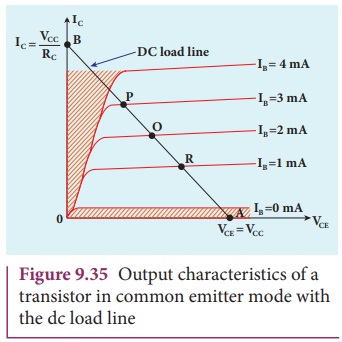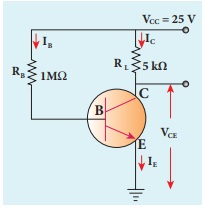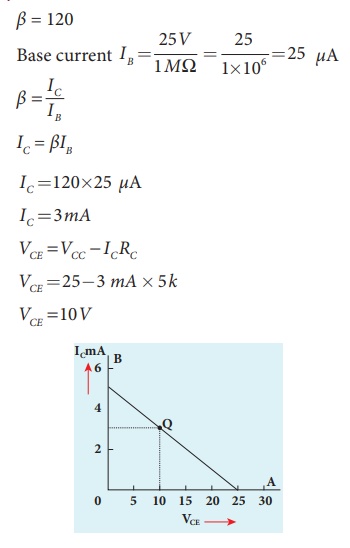Bipolar Junction Transistor [BJT] - Operating Point | 12th Physics : UNIT 10a : Semiconductor Electronics
Chapter: 12th Physics : UNIT 10a : Semiconductor Electronics
Operating Point
Operating Point
The operating point is a point where
the transistor can be operated efficiently. A line that is drawn with the values
VCC (when IC = 0) and IC (when VCE = 0) is called the dc load line. The dc load line
superimposed on the output characteristics of a transistor is used to learn the
operating point of the transistor as shown in Figure 9.35.

Points P, Q, R in Figure 9.35 are
called Q points or quiescent points which determine the operating point or the
working point of a transistor. If the operating point is chosen at the middle
of the dc load line (point Q), the transistor can effectively work as an
amplifier. The operating point determines the maximum signal that can be
obtained without being distorted.
For a transistor to work as a open
switch, the Q point can be chosen at the cut-off region and to work as a closed
switch, the Q point can be chosen in the saturation region.
EXAMPLE: 9.8
The current gain of a common emitter
transistor circuit shown in figure is 120. Draw the dc load line and mark the Q
point on it. (VBE to be
ignored).

Solution
ő≤ = 120

Related Topics